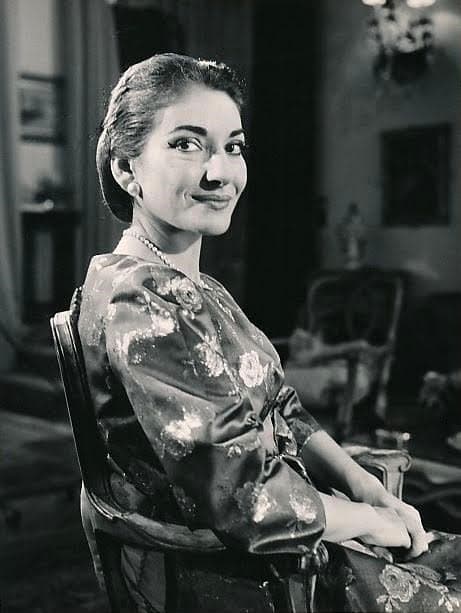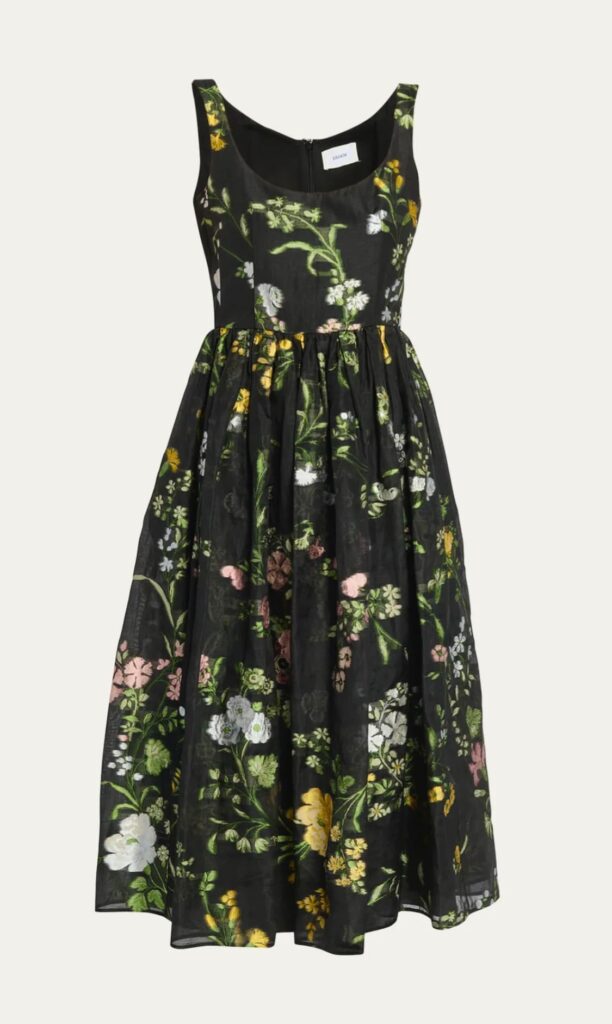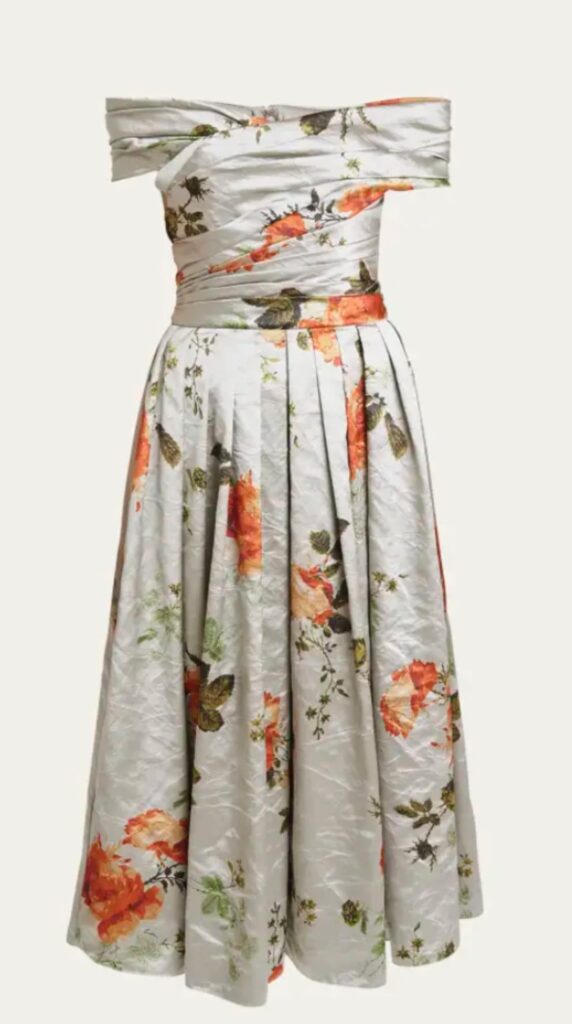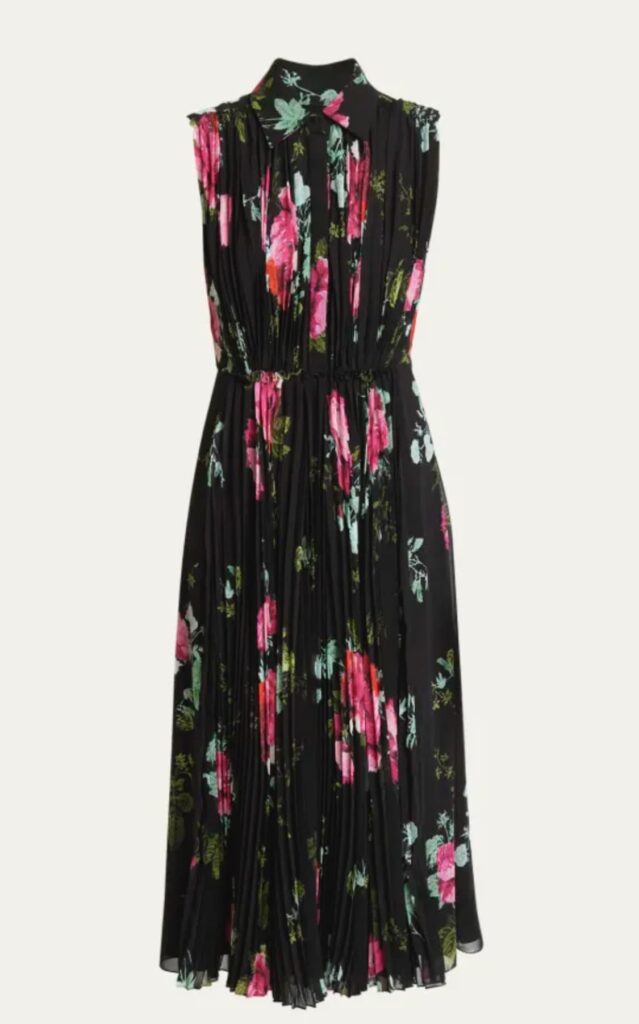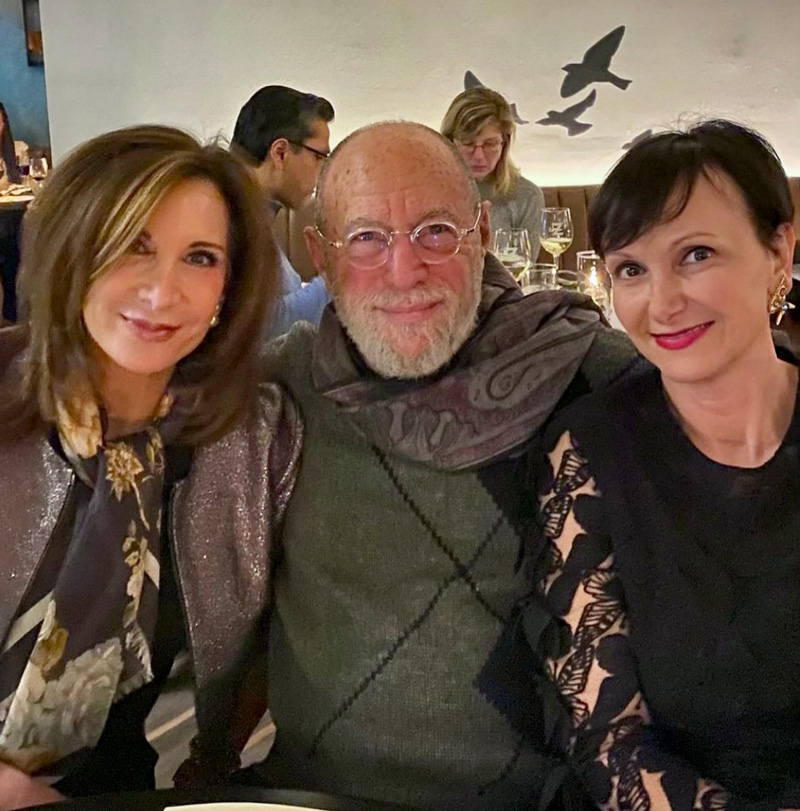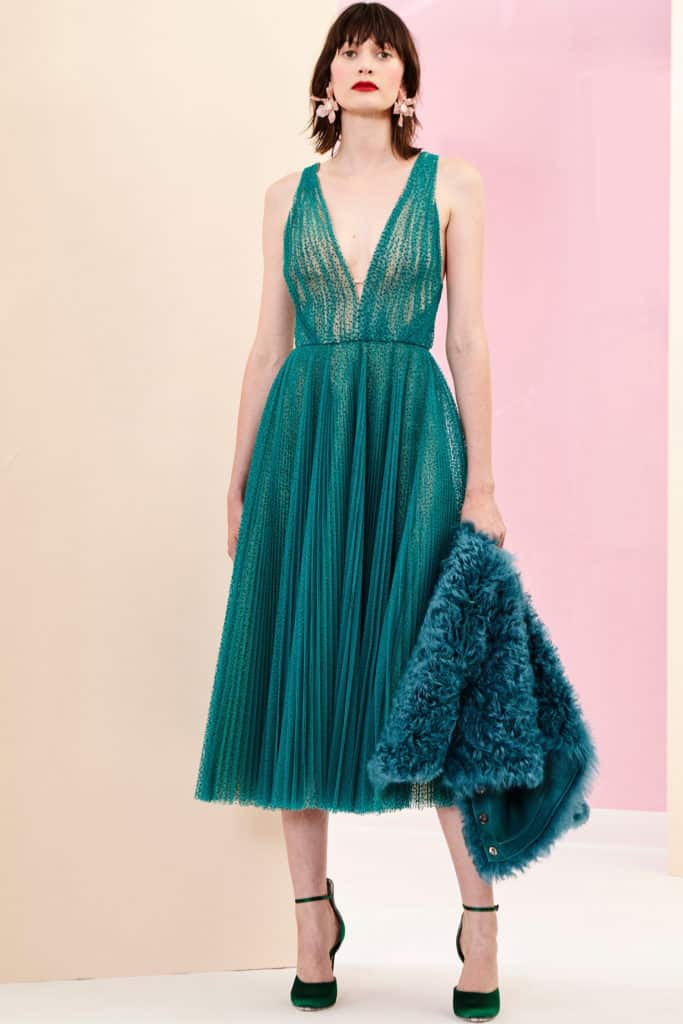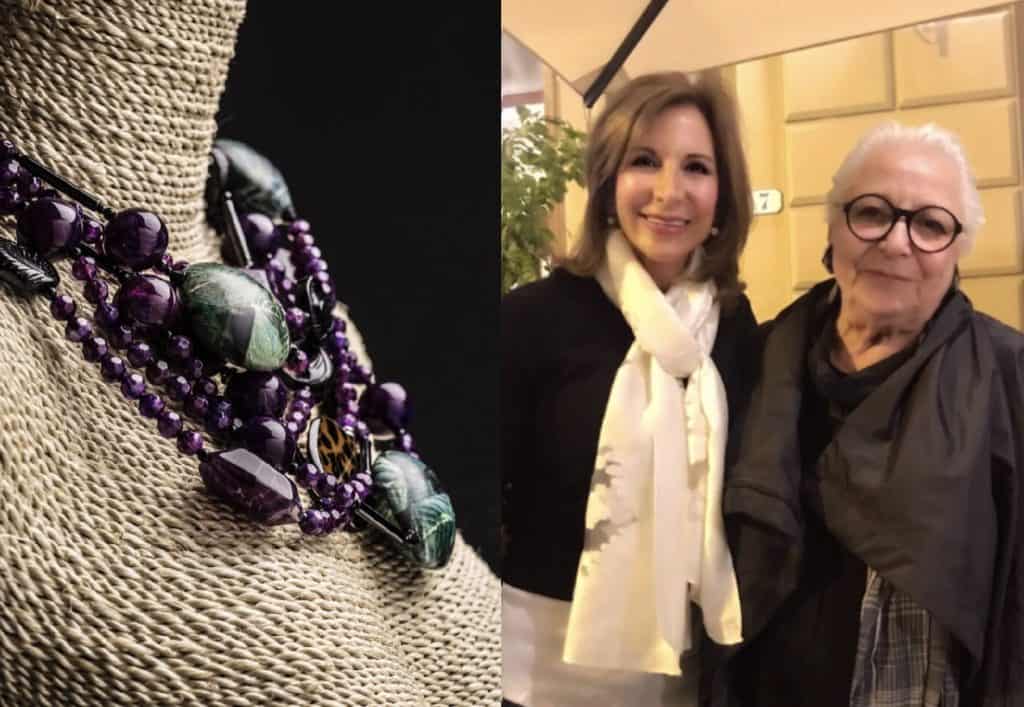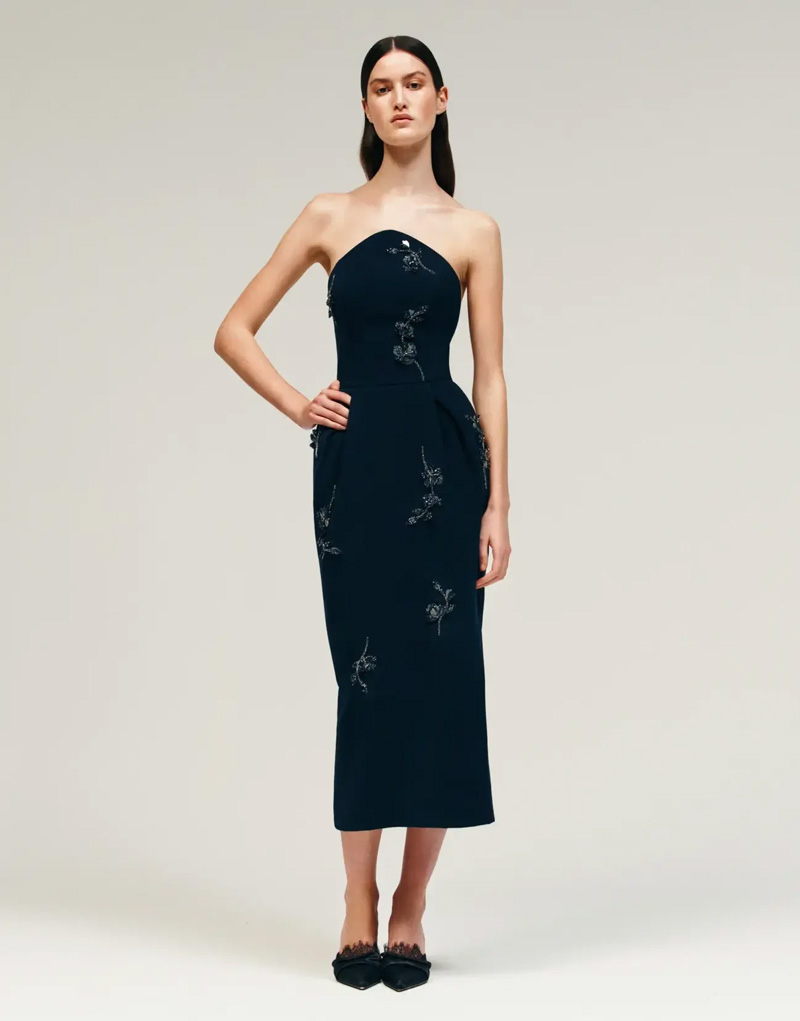
Sabina Belinko’s designs possess an enchanting duality – at once dramatic and romantic.
There is a sleek sophistication to the sequined, beaded Bilenko evening gowns and dresses we are featuring at Mary Jane Denzer – fitted silhouettes, angular necklines and drapery, monochromatic colors – mostly black, navy and cream – or color-block effects.
Recreated for the fall, Bilenko’s best-selling Lisa Dress, a strapless midnight blue midi, displays not only intricate beading but an arresting arched neckline that both draws the eye upward and announces a cocktail party alternative to the Little Black Dress.
Similarly, in the Sabina Dress – a full-length Empire creation in black, as seen here, or white – a V-neck, sleeveless, sequined bodice in cream introduces a seamless transition to a smooth, columnar skirt.
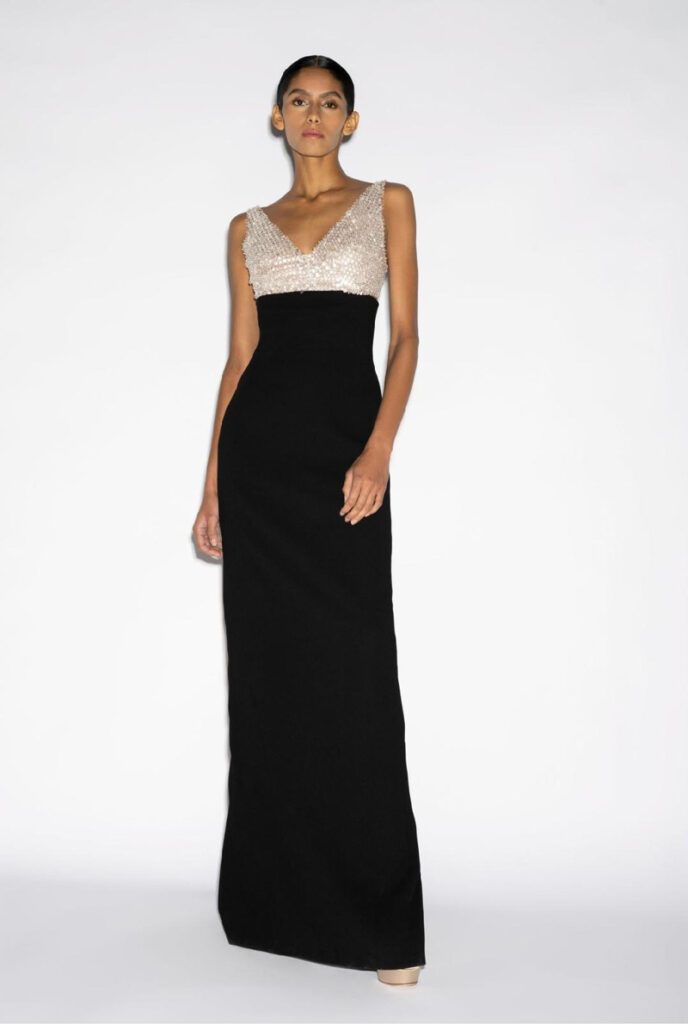
Bilenko’s gift for subtle eye openers can also be seen in a gown that finds a long-sleeved, black, leotard-style top paired with a cool-black sequined skirt characterized by a waist that’s cut on a bias and a slit up the right leg.
Such glamour reflects the quiet luxury of fashion at this moment. But the monochromatic quality of her designs can also make use of bright and deep colors. Teal peblum midi suits and pants suits with plunging, crisscross backs. Long-waisted dresses in seafoam. Russet gowns with shoulder pads and scaly trains that echo 1940s film noir. These speak to the romantic side of the designer, as do the pink, blush and lavender mermaid silhouettes of the Autumn Winter 2024 Couture Collection, with its floral embellished bodices. (Is it any wonder that Bilenko should also have a striking bridal collection?)
As her website states, “the draping is freer, the embroideries more exaggerated and the sculptural touches gentler – as if Mother Nature has taken over the artisan’s hand.”
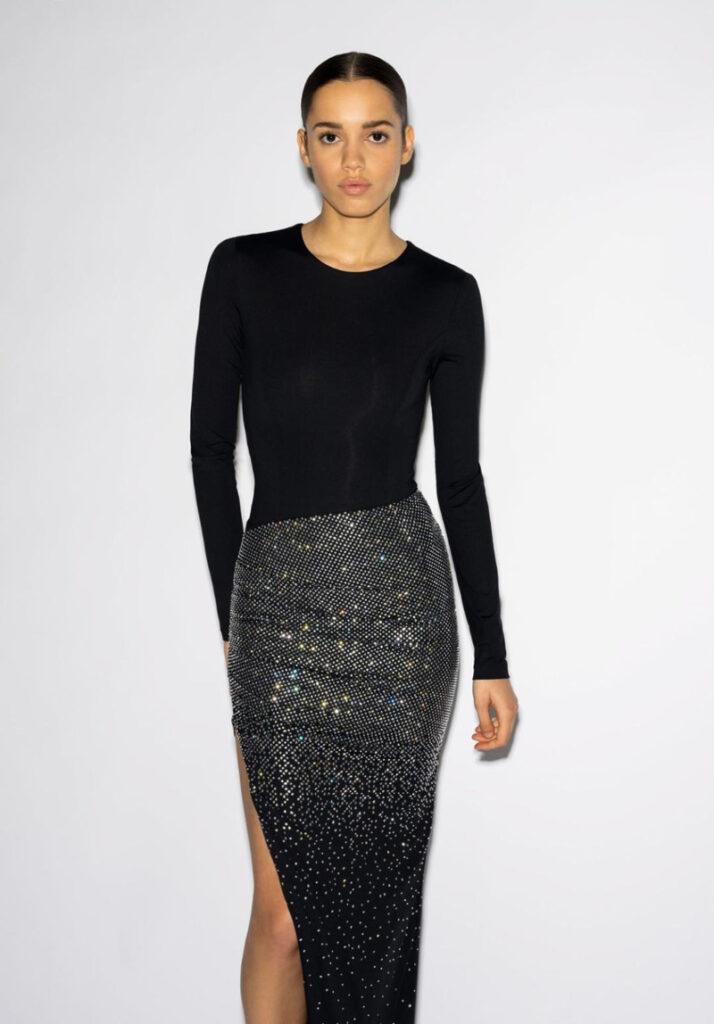
Bilenko’s duality was perhaps born of her twinship. She and twin sister Diana, creative director of the brand, grew up in Uzbekistan, the daughters of a woman who collected fashion pieces. At 15, they moved to London to study and eventually earned master’s degrees in luxury management. They began with a baby couture label in 2017, continued with Grace Floral London in 2020 and, working at a kitchen table during the pandemic, moved on to the Sabina Bilenko label.
You can see the twins’ Uzbek traditions in the designs’ use of ornamentation. But as Diana told Vogue Arabia, “Fashion is about personality and confidence, not brands and trends.”
The sisters are committed to Centrepoint, a charity in the United Kingdom that fights youth homelessness, with Prince William as its patron.
Added Sabina: “I believe it takes both strength and kindness to be elegant.”
Tags: Sabina Bilenko, Diana Bilenko, Uzbekistan, Vogue Arabia, Centrepoint, London, Grace Floral London, Prince William, United Kingdom, Mary Jane Denzer,

